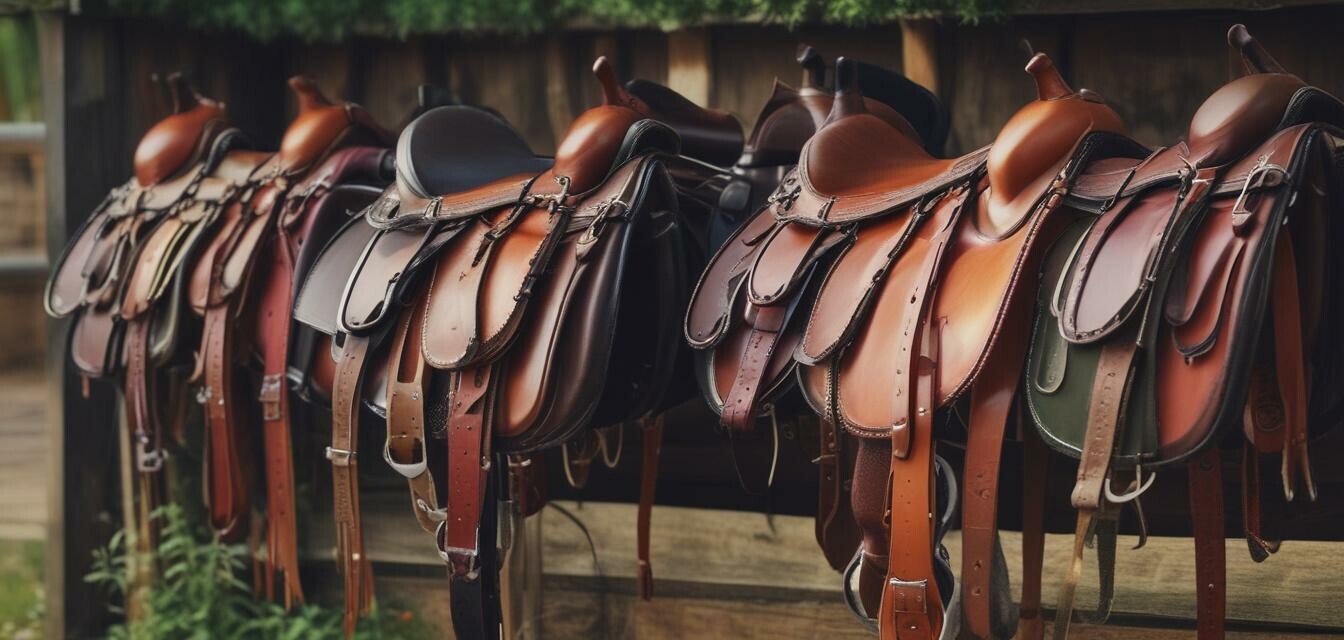
How to Choose the Right Saddle for Your Riding Style
Key Takeaways
- Understand the different riding styles to choose the right saddle.
- Consider saddle fit for both the rider and the horse.
- Evaluate various materials and features for your needs.
- Research reputable brands and expert reviews for quality assurance.
- Consult with a professional if you are unsure about your choices.
Finding the perfect saddle can be overwhelming, particularly with the myriad of options available for different riding styles. Whether you are a novice rider or experienced equestrian, selecting the right saddle is crucial to ensure comfort and safety for both you and your horse. In this guide, we will explore various riding styles and provide essential tips on how to choose a saddle that aligns with your specific needs and preferences.
Understanding Different Riding Styles
Before diving into saddle selection, it’s important to grasp the main riding styles. Each style has different saddle requirements. Here’s a breakdown of some popular riding styles:
| Riding Style | Description | Recommended Saddle Type |
|---|---|---|
| English Riding | A disciplined riding style often associated with jumps and dressage. | Dressage Saddles or Jumping Saddles |
| Western Riding | A style that emphasizes a relaxed seat and secure riding position. | Western Saddles |
| Endurance Riding | A long-distance riding style focusing on comfort over mixed terrains. | Endurance Saddles |
| Pony Riding | Designed for children or small riders on ponies for leisure and competition. | Pony Saddles |
| All-purpose Riding | A versatile style ideal for riders who switch between disciplines. | All-Purpose Saddles |
Considerations for Saddle Fit
Once you understand your riding style, it’s time to evaluate saddle fit. Proper saddle fit is not only about the size but also affects performance, comfort, and safety.
Saddle Fit for the Rider
- Seat Size: Choose a seat size that allows you to sit comfortably without feeling restricted.
- Flap Length: Make sure the flap length corresponds to your leg length to ensure proper leg positioning.
- Twist Width: The twist is the part of the saddle that sits under your thigh. A narrower twist can allow for more leg contact.
Saddle Fit for the Horse
- Wither Clearance: The saddle should sit above the horse’s withers to ensure comfort and freedom of movement.
- Tree Width: The tree should match the horse's back width to distribute weight evenly.
- Panel Type: Consider panel types, as they affect how the saddle interacts with the horse’s back.
Materials and Features to Look For
The materials and features of a saddle can significantly impact performance and comfort. Here are some elements to consider:
| Material | Benefits | Considerations |
|---|---|---|
| Leather | Durable, conforms to the horse, provides a classic look. | Requires maintenance, may be heavier. |
| Synthetic | Lightweight, easy to maintain, often more affordable. | May not conform as well, limited color options. |
| Padding/Paneling | Enhances comfort for both rider and horse. | Quality varies, consider thickness and materials. |
Researching Brands and Models
With the basics covered, it’s time to explore the various brands and models available. Here are some tips to help in your research:
- Read Reviews: Look for reviews on reputable websites and forums.
- Consult Professionals: Reach out to certified saddle fitters or trainers for recommendations.
- Compare Pricing: Don’t settle for the first option; explore different sellers to find the best price.
Final Tips for Choosing Your Saddle
Choosing the right saddle doesn’t have to be complicated. Here are some final tips:
Beginner Tips
- Try before you buy: If possible, test a few saddles during a riding session.
- Don’t rush: Take your time to understand the different types of saddles.
- Stay within budget: Quality saddles are an investment, but set a price range that works for you.
Pros
- Comfort for both the rider and the horse.
- Improved riding posture and balance.
- Enhanced performance in chosen discipline.
Cons
- Higher initial investment for quality saddles.
- Time-consuming to find the perfect fit.
- Specific maintenance required for different materials.
Conclusion
Choosing the right saddle is essential for a pleasant and effective riding experience. By understanding your riding style, ensuring proper fit for both you and your horse, and considering the necessary materials, you can make an informed decision. Don't hesitate to seek professional guidance, and always do your research before committing to a purchase. Happy riding!